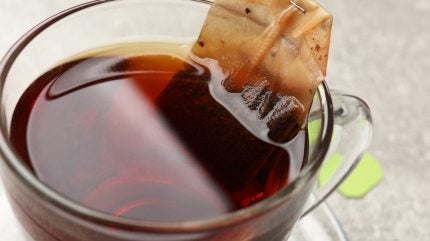
Tea is one of the most widely consumed beverages in the world, with centuries of tradition behind it and a booming modern market that demands convenience, freshness and visual appeal.
At the heart of this industry lies tea packaging—a critical component not only for preserving flavour and aroma but also for ensuring practicality, shelf appeal, and increasingly, environmental responsibility.

Discover B2B Marketing That Performs
Combine business intelligence and editorial excellence to reach engaged professionals across 36 leading media platforms.
Whether you’re a tea brand owner, a packaging designer or a curious consumer, understanding the various tea packaging options available today can provide insights into quality, sustainability, and consumer preferences.
Single-serve formats: convenience and freshness on the go
Single-serve tea packaging has grown in popularity, aligning with fast-paced lifestyles and the demand for consistent, easy-to-prepare brews. Among the most common formats are tea bags, sachets, and stick packs, each offering unique benefits in terms of usability and packaging material.
Tea bags are the classic choice—small porous pouches containing broken tea leaves or fannings. Traditionally made from filter paper, newer varieties now incorporate biodegradable mesh materials that balance functionality with eco-consciousness.
Pyramid-shaped tea bags are especially popular for their ability to house whole leaf teas, allowing better infusion and flavour extraction.

US Tariffs are shifting - will you react or anticipate?
Don’t let policy changes catch you off guard. Stay proactive with real-time data and expert analysis.
By GlobalDataSachets serve a similar purpose but are often used interchangeably with tea bags in premium markets. These sealed packets, typically constructed from foil, paper, or biodegradable plastics, are ideal for single servings and provide an airtight barrier against moisture and light.
Sachets maintain product freshness longer than traditional tea bags and are frequently used for high-end or flavoured blends.
Stick packs have become a go-to format for powdered products like instant tea or matcha. These slim, tubular packets are often made from a mix of paper, aluminium and plastic laminates, offering ease of opening and precise dosing.
Stick packs are particularly suitable for travel or office use, where portability and mess-free preparation are priorities.
These formats excel in portion control, freshness, and user-friendliness—key factors for both consumers and manufacturers navigating the highly competitive beverage market.
Pouches and infusers: embracing tradition with modern twists
While single-serve packaging caters to convenience, loose leaf tea remains a favourite among enthusiasts who value the ritual and quality of a freshly brewed cup. Packaging solutions in this space often revolve around preserving freshness while offering a premium, reusable or resealable experience.
Stand-up pouches are a common choice for loose leaf teas, made from multi-layered materials combining paper, foil and plastic.
These pouches often feature resealable zippers and one-way degassing valves, which help maintain product integrity by keeping out air and moisture. Their upright design maximises shelf presence, making them popular for retail environments.
In recent years, compostable tea pouches have emerged, reflecting the industry’s shift towards sustainable packaging. Materials such as PLA (polylactic acid), derived from corn starch, are now used to produce eco-friendly alternatives that break down in industrial composting facilities.
For the actual brewing process, tea infusers offer a reusable solution. Common designs include stainless steel ball infusers, silicone holders, and fine mesh baskets that allow full leaf expansion during steeping.
Unlike disposable tea bags, infusers can be used repeatedly and tailored to specific tea types, from oolong to herbal blends. Their popularity is rising in tandem with the increased awareness of single-use plastic waste.
By combining the aesthetic charm of traditional tea preparation with modern materials and features, pouches and infusers appeal to both eco-conscious and quality-focused consumers.
Sustainable tea packaging: reducing impact without compromising quality
As consumers become more environmentally aware, the demand for sustainable tea packaging is growing rapidly. This shift is influencing every aspect of packaging design, from the sourcing of materials to end-of-life disposal options.
Traditional packaging materials such as foil and plastic, while effective for preserving freshness, pose significant environmental challenges. In response, brands are exploring compostable films, recycled paperboards, and plant-based laminates.
For example, PLA and cellulose-based materials are increasingly used to create biodegradable tea bags and sachets that break down without leaving harmful residues.
Minimalist packaging design is another trend, reducing excess material usage while maintaining strong brand visibility. Clear labelling around recyclability, disposal instructions, and ingredient sourcing also plays a role in promoting transparency and trust among consumers.
Furthermore, some tea brands are adopting bulk packaging options for retailers and cafes, significantly lowering the carbon footprint associated with secondary and tertiary packaging.
This model is particularly successful for loose leaf blends and refill stations, where customers bring their own containers.
Sustainability does not mean compromising on quality or consumer appeal. With advances in packaging technology and an emphasis on lifecycle impact, it’s now possible to create tea packaging solutions that meet functional, aesthetic, and environmental goals in harmony.
The takeaway
The world of tea packaging is evolving, blending heritage with innovation to meet changing consumer expectations.
Whether it’s the convenience of stick packs, the elegance of sachets, the ritual of infusers, or the promise of zero-waste pouches, the right packaging plays a pivotal role in enhancing the tea experience.
For brands and consumers alike, being informed about packaging options not only supports better choices but also contributes to a more sustainable, enjoyable future for tea lovers everywhere.





